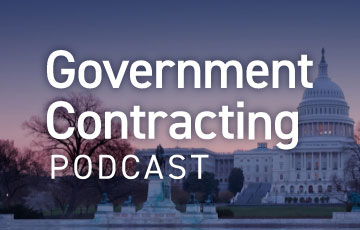On January 30, 2022, the new federal contractor minimum wage will go into effect. The change in wage determination was one of President Biden’s executive orders on April 27, 2021.
The executive order (EO) mandates the following:
- Starting January 30, 2022, the federal contractor minimum wage will be raised to $15 per hour for prime contractors and subcontractors.
- January 1, 2024, tipped worker federal contractor minimum wage will be eliminated.
- Federal contractor minimum wage will apply to new contracts issued on or after January 30, 2022, and any existing contracts extended or renewed or an option exercised after January 30, 2022.
- Contracts that meet the definition covered under the EO and by the Fair labor Standards Act, the Service Contract Act, or the Davis-Bacon Act will be affected, and contracts under the latter two will have a new $15 per hour wage floor that will likely rise each year.
- The new $15 minimum wage does not apply to grants or any contracts, contract-like instruments or agreements with American Indian Tribes, or other contracts or contract-like instruments expressly excluded by subsequent regulations.
- The secretary of labor will increase the federal contractor minimum wage each January, by increments of 5 cents, based on the annual increase in the consumer price index.
Who Will Be Affected?
The new directive will undoubtedly impact federal contractors in the A&E space; however, each contractor’s impact will vary and depend mainly on the build-up of their workforce based on the proportion of un-specialized service labor, laborers, and mechanics as these labor categories are typically on the lower end of the pay scale and are typically covered by the Service Contract Act (SCA) and Davis-Bacon Act (DBA).
As stated in Executive Order 14026, the mandate will impact contracts that meet the definition covered under the EO and by the Fair labor Standards Act, the SCA, or the DBA. Consider these factors when evaluating how the wage increase will impact your current and future contracts with a few months left to the start date.
Impact on Current Contracts
The effect of the wage increase may range from minimal to maximal, depending on the nature of your workforce. Contractors with a substantial number of employees and subcontractors that are considered non-exempt or fall under SCA or DBA, will potentially experience increases in labor and possibly overhead costs, due to reporting and record-keeping requirements.
Typical A&E workforces comprise specialized labor employees whose compensation is commensurate with their skill level and are generally competitive and surpasses any minimum wage requirements. Contractors with predominantly skilled labor employees may not be as impacted as their counterparts. However, this does not preclude all contractors, regardless of the composition of their workforce, from understanding the executive order requirements partly because the provisions apply to subcontractors who perform on federal contracts. Ensuring subcontractor compliance with the requirements may fall under your responsibility as the prime depending on your agreement.
As noted above, the new wage minimum may rise each year, meaning contractors will need to review the wages paid to their employees each year on federal contracts to ensure appropriate wage payment. Therefore, it is advisable to evaluate the process for price adjustments under the Federal Acquisition Regulation (FAR) 52.222-43 and seeking other reasonable contract price adjustments when the new federal minimum wage is applied to contract extensions or renewals, or when options become exercised.
Impact on Future Contracts
To mitigate any risks associated with the wage increase, contractors should start planning to price all new federal 2022 work using the $15 minimum per hour wage rate. The new $15 per hour wage minimum will likely rise each year; therefore, contractors should consider this when pricing future work in addition to considering the contract type. Considerations must include the impact this would have on proposed direct labor and subcontract costs.
Reliance on pricing for future work based solely on the current minimum wage determinations or historical costs may not be sufficient to estimate accurate and reasonable labor and subcontract costs for future work. Contractors should conduct a thorough analysis to evaluate the future potential increases to ensure proposals are realistic. Consider developing an internal review process and methodology to ensure that the wages for lower-wage workers will be adjusted and reflect accurate wage rates and applicable basis of estimates.
For more information on how this may impact your firm, pricing considerations and potential compliance consequences, contact us.




